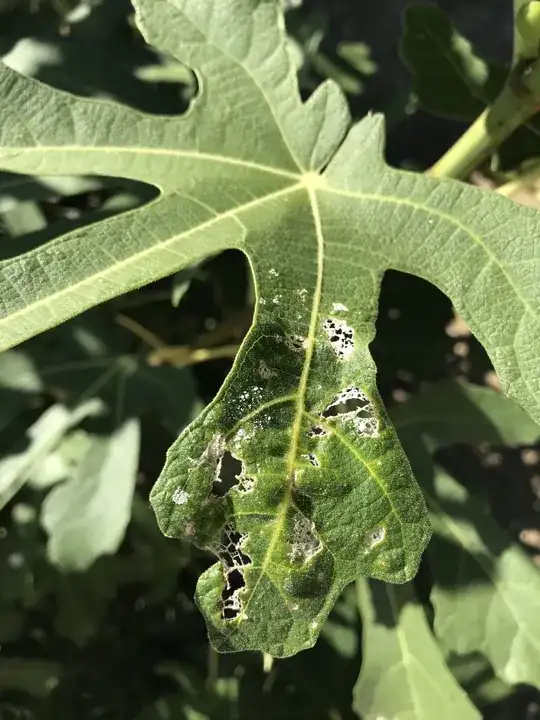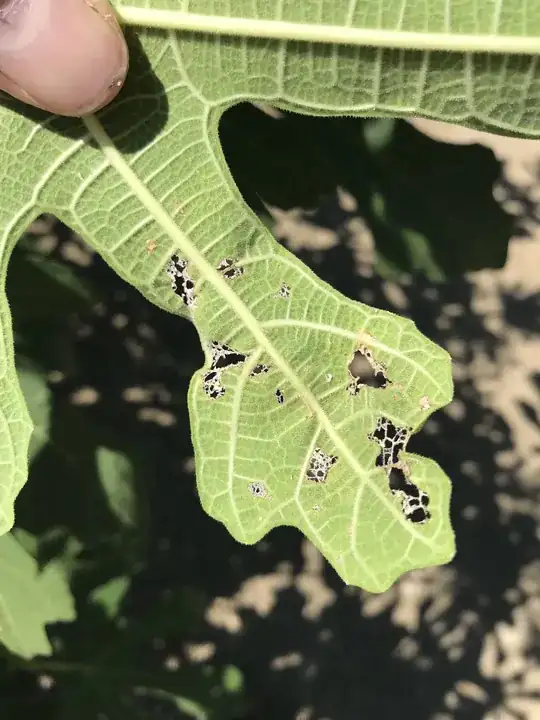I’ve searched for fig tree ailments (and there are many!) but can’t find a match for my problem. Can anyone help? Many of the leaves look like this - the leaf bulk has been eaten away and there is left either a hole, or a fine white mesh (I guess leaf veins). I don’t see any rolled leaves, aphids, ants, bulbous areas on either side of leaf, no brown or yellow anywhere. We are in the south of France. Ideas??


